Introduction to Sedum and Rock Gardens
Picture this: a serene landscape where each stone is a canvas, and the brushstroke is none other than the hardy and versatile sedum. Known to many as a rock garden’s jewel, sedum plants are the embodiment of resilience and beauty. Whether perched atop an alpine ridge or nestled within the nooks of your backyard rockery, these succulents have a unique knack for thriving amidst the rocks. But what is it about sedum that makes it such a perfect fit for stony settings?
For one, their drought-tolerant nature means they can prosper even in the lean crevices of a rock garden. Their roots, though not extensive, are experts at seeking out moisture and nutrients in seemingly barren terrain. They’re survivors, much like the stones they grow among—timeless and steadfast. When other plants might wither in the harsh embrace of a stony landscape, sedums stand tall and vibrant, adding a splash of color to an otherwise muted palette.
Imagine walking through a garden where sedums of various shapes and hues punctuate the rocky tableau. From the frosty blues of ‘Sedum reflexum’ to the warm autumnal tones of ‘Sedum spurium’, these plants transform rock gardens into living masterpieces. Their allure does not just lie in their aesthetic versatility; sedums also play a crucial role in preventing soil erosion, their intricate root systems holding the earth in place like nature’s very own guardians.
Visual learners might appreciate seeing the symbiotic relationship between sedums and rock gardens in action. Here’s a that brings to life the harmony of such landscapes.
It’s not just their resilience or their picturesque quality that enshrines sedum in the hearts of garden enthusiasts. Take a stroll through our guide on perfect succulent care and discover the sheer joy these plants bring to the attentive gardener. Sedums are not just survivors; they’re interactive elements of the landscape, changing and growing with each passing season, telling a story of adaptation, survival, and natural splendor.
In the end, the bond between sedum and stone is not merely one of survival but of artistic collaboration. These tenacious plants take a harsh, rocky environment and soften its edges, creating a tableau that’s as compelling as it is enduring. In the embrace of rock gardens, sedum plants find a home where they can showcase their full potential, echoing the natural artistry that has shaped our landscapes for millennia.
Understanding Sedum: A Plant for Tough Spots
Ever wondered about that mighty little plant growing with unwavering determination between the cracks of your garden path? That resilient trooper is likely a Sedum, often heralded as the unsung hero of rockeries and arid landscapes. But what gives Sedum its superpowers? Let’s dig in and uncover the secrets that enable these hardy succulents to thrive where others might falter.
Sedum species, affectionately known as Stonecrop, are adept at storing water in their fleshy leaves, a trait that makes them drought-resistant warriors. Their ability to retain moisture for long periods means they can survive and even flourish in rocky terrains, which typically lack deep, nutrient-rich soil. This characteristic comes from their origins; many Sedum varieties are native to areas with harsh climates, embodying the essence of survival against the odds.
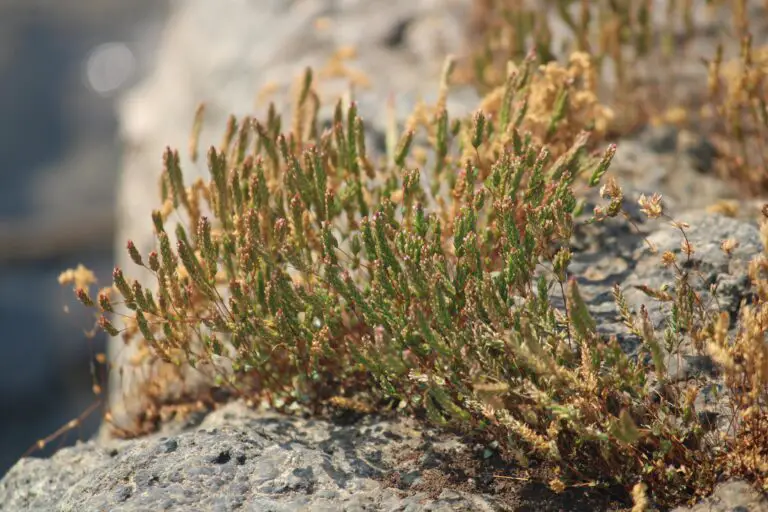
Imagine a sun-drenched outcrop with minimal soil, where most plants would wither away. Here, Sedum plants come alive, their vibrant colors popping against the grey stone as they turn inhospitable environments into their own personal tapestry. But don’t be fooled; these aren’t just tough plants grudgingly pushing through a Spartan existence. They’re garden gems, known for their enduring beauty, ready to add a pop of color with minimal upkeep.
As you venture deeper into the world of Sedum, it becomes clear why these plants are prized for more than their resilience. Beyond their spirited vigor in the face of drought, Sedum varieties bring aesthetic versatility to the table. From the creeping carpets of Sedum acre to the upright elegance of Sedum spectabile, there’s a Sedum for every rock garden’s nook and cranny.
For those looking to transform challenging areas of their garden into a low-maintenance oasis, check out these indispensable gardening tips that explore the diverse palette of Sedum plants and the savvy techniques to ensure they prosper. In the realm of Sedum species, a little knowledge goes a long way in achieving gardening success, even in the most stubborn spots.
The adaptability of Sedum lies not just in its environmental resilience, but also in its harmonious coexistence with other plants. These succulents pair beautifully with other drought-tolerant species, creating symphonies of texture and color that resonate throughout the growing season. As a gardener, discovering the right Sedum for your rock garden or tough spot is akin to finding a loyal friend – low maintenance, high appeal, and steadfast through the highs and lows of seasonal change.
Sedum’s Soil Preferences: A Rocky Relationship
When delving into the soil needs of sedum plants, one quickly discovers they harbor a marked preference for living on the edge—specifically, the edge of rocky terrain! Yes, these hardy succulents are nature’s rock stars, thriving where few plants dare to set roots. But what is it about rocks that makes sedum sing?
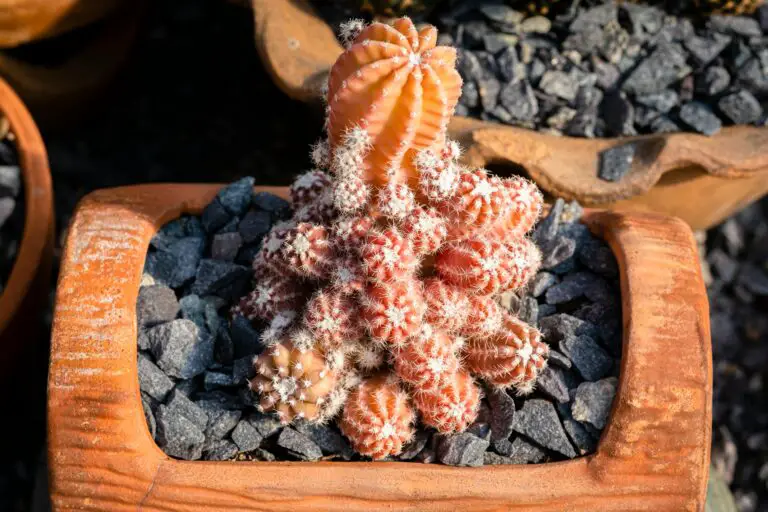
In their quest for survival, sedum varieties have evolved to make the most of well-drained, gravelly substrates, often found in the nooks and crannies of stone gardens. Why gravel, you might wonder? It’s all about the drainage! Unlike the dense, moisture-retaining soils that spell doom for many a plant, a stony environment offers excellent drainage, preventing water from loitering around sedum’s roots and inviting rot to the party.
Imagine a scenic rock garden, sprinkled with the jewel-toned foliage of sedum—the greens, reds, and yellows adding vibrant splashes of color to the textured tableau of stones. This isn’t just a feast for the eyes; it’s a strategic partnership. The rocks act as a natural mulch, maintaining the soil structure and keeping those pesky weeds at bay, all while sedum’s shallow roots nestle comfortably among them, free from the threat of waterlogged soil.
So whether you’re eyeing a sun-drenched slope or a quaint alpine bed, don’t just think about the stones as mere decoration. They’re the firm foundation for your sedum’s success, offering the well-draining haven that allows these succulents to thrive and become the crowning glory of your rock garden dreams.
Planting Sedum in Rocky Terrain: Steps for Success
Sedum, often heralded as the undemanding gem of rock gardens, is as resilient as it is enchanting. But even the hardiest of jewels requires some finesse to shine in a stony setting. Are you eager to cultivate a vibrant tapestry of these succulents among your garden rocks? Prepare to embark on a greenthumbing quest that will turn your rocky terrain into a flourishing haven for sedum plants.
Let’s start with the canvas: your rock garden. Imagine the natural crevices and nooks between the stones, picture how nature artfully tucks her botanical treasures into every possible niche. It’s in these pockets where sedum thrives. To mimic this masterpiece, you’ll need to strategically place your sedum where the roots can grip the underworld of your rock maze.
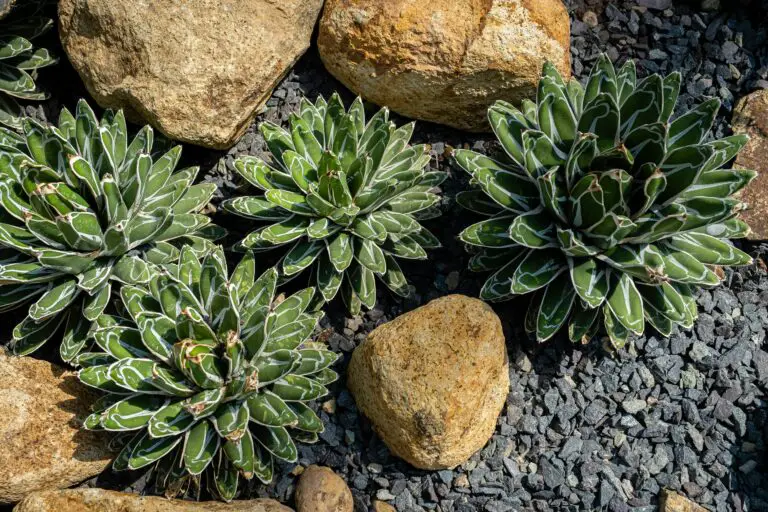
Now, the cornerstone of planting sedum in such rugged terrains is ensuring proper drainage. Their succulent nature yearns for quick-drying soil to prevent root rot. Some enthusiasts swear by a mixture of sand, gravel, and a handful of compost to concoct the perfect gritty blend. Remember, your sedum doesn’t require a feast of nutrients—just a sip. As you nestle each plant into its stony bed, be mindful of the roots, allowing them to spread out and anchor themselves.
But, don’t let their drought-tolerant reputation fool you; even these robust plants need a tad bit of TLC. In the initial weeks post-planting, make it a routine to quench their thirst until they’re firmly rooted. Once established, their need for water wanes as they become the self-reliant warriors of your garden.
A Real-Life Sedum Saga
Consider Sarah’s rock garden in sunny California, a hodgepodge of pebbles, boulders, and alpine delights. When she introduced sedum, she was met with skepticism—rocks, after all, aren’t known for hospitality. Undeterred, she blended native soil with pea gravel, scattered the sedum starts, and watched as they wove themselves through the rocky tapestry, fashioning a colorful, living mosaic. Her garden is a testament to sedum’s compatibility with rocky realms.
The beauty of sedum lies in its ability to adapt. Sun-loving species like Sedum acre and Sedum reflexum beam with joy when kissed by rays, while shade-seekers such as Sedum ternatum forge their path in the dimmer spots. It’s a sedum for every stone, each with the innate potential to transform the lifeless into the lively.
Finally, an ode to patience: the slow and steady rhythm of sedum’s growth. Rocks don’t rush, nor do these stoic dwellers. Over the seasons, watch as your sedum eases into its new rocky abode, expanding gently, blooming with minimalist flowers, and declaring—to any who gaze upon it—that yes, sedum will not just grow in rocks, but indeed prosper with a quiet, resilient beauty.
Watering and Maintenance: Caring for Sedum in Rocks
Imagine your rock garden embedded with the jewel-like sparkle of sedum plants—thriving, resilient, and adding a pop of color amidst the stones. Contrary to what some might think, sedums are particularly suited for the nooks and crannies of a rock garden, but their care differs slightly from their soil-grown cousins. Let’s banish the myths and get down to the nitty-gritty of nurturing your rocky greens.
Watering Wisdom for Sedum Serenity
Water—the essence of life—needs a measured approach when it comes to sedums in stony setups. These succulent beauties are drought-tolerant troopers, which means overwatering is the true nemesis here. In rock gardens, drainage is naturally superb, so your main job is to prevent pooling that can rot the roots. The catchphrase is ‘less is more’: water sparingly, allowing the soil to dry out between sessions. Picture this: a summer’s eve, you, a watering can, and the delightful task of a light sprinkle. Pure zen!
Feeding Finesse: Less, but Best
Next on our care list is food. Sedums are like the frugal foodies of the plant world—they don’t demand much but do appreciate a nibble of nutrition now and again. Use a slow-release, low-nitrogen fertilizer to avoid overly lush foliage that could succumb to pests or break easily. Think of it as seasoning the dish to perfection; a little goes a long way for the taste buds—or, in this case, for vibrant growth.
The Upkeep Chronicle: Keep it Tidy
General upkeep is the finishing touch in our sedum saga. These stone-cradled gems do best with a bit of tidying—a trim here, a pluck there. Removing dead or damaged foliage encourages the plant to focus its energy on the healthy sections, promoting a flourish of sedum splendor. It’s like grooming a prized pet, ensuring it’s always show-ready, except it’s your sedum stealing the limelight in its rock bed podium.
Remember, each rocky crevice is an opportunity for a sedum to shine. With your newfound understandings on the water, food, and care-front, you’re more than ready to ensure that sedum doesn’t just grow, but thrives amid the rocks. Embrace the challenge, and let the resilience of these succulent stars light up your rocky oasis!
Popular Sedum Varieties for Rock Gardens
Ever wondered if your rock garden could boast more than just rugged edges and solitude? Enter Sedum, the plant genus that’s ready to transform your stony oasis into a living work of art. As the garden’s low-maintenance jewel, sedums flourish even when wedged between a rock and a hard place. Let’s dive into some sedum varieties that truly relish a life among the stones.
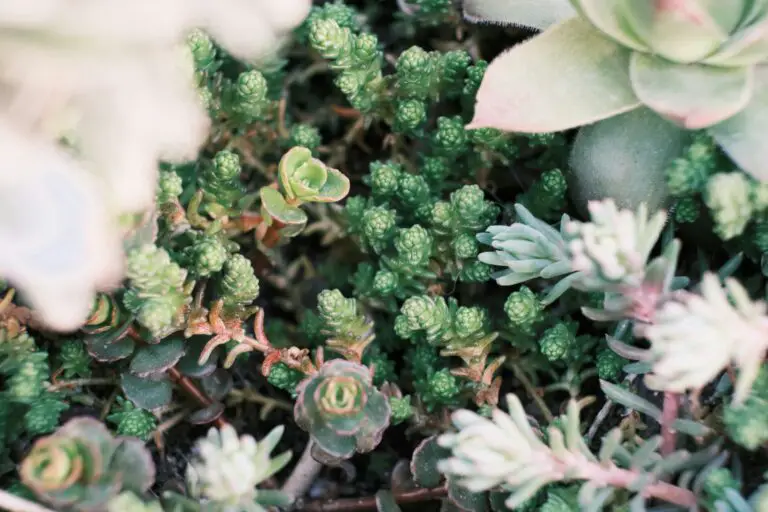
Sedum ‘Angelina’
The ‘Angelina’ sedum, with its radiant, needle-like foliage that turns from lime-green to brilliant golden-yellow, is a scene-stealer. Its tenacity is on full display as it cascades over boulders, offering a year-round spectacle that defies the barrenness often associated with rocky terrain.
Sedum spathulifolium ‘Cape Blanco’
Championing the color silver in a garden dominated by verdant hues, the ‘Cape Blanco’ dazzles with its rosettes of powdery leaves. This variety mirrors the moonlight as it casts a silver glow amidst the stones, hinting at the magic of twilight in your very own rock garden.
Sedum reflexum ‘Blue Spruce’
Recreating the look of a miniature forest, the ‘Blue Spruce’ sedum boasts conifer-like blue-green foliage. Imagine them sprouting between pebbles, imparting an alpine charm that makes you feel one with nature, despite being yards away from the closest mountain range.
Sedum ‘Dragon’s Blood’
A narrative isn’t complete without a touch of drama, and what better to provide it than the ‘Dragon’s Blood’ sedum. With leaves that transition from green to deep red, this variety lends a fiery contrast to the earthy tones of the surrounding rocks. It’s not just a plant; it’s a testament to the explosive diversity that can prosper in your rocky retreat.
Sedum rupestre ‘Lemon Ball’
Less like a plant and more like a botanical sunbeam, the ‘Lemon Ball’ sedum offers vibrant lemon-yellow foliage that brightens any corner of your rockery. Its fluorescent exuberance is ample proof that life in the rock garden can be vigorous and full of zest.
These popular sedum varieties are just a few examples of how resilient beauty can be cultivated in the most unexpected places. Whether you’re a seasoned gardener or a curious onlooker, it’s clear that the right selection of sedum can elevate rock gardens from silent sentinels into thriving ecosystems. Each variety, with its unique flair, contributes to an illustrious palette that decorates the rock garden’s canvas – proving, once and for all, that sedum will indeed grow in rocks, and do so with unmatched elegance.
Common Challenges when Growing Sedum in Rocky Spaces
Rock gardens are a spectacle of nature’s resilience, showcasing plants that flourish in the seemingly inhospitable crevices of stone. Sedum, known for its robust nature and succulent leaves, often stars in these natural arenas. However, as gardeners, we must recognize the trials these steadfast plants face when making their homes among the rocks.

A familiar challenge is erosion control. Unlike the nurturing embrace of rich soil, rocks can be a bed of instability for sedum roots. The key? Ensuring pockets of soil are deep enough for roots to anchor, securing the sedum against the whispering threats of wind and water runoff. A gardener’s tale recounts the success of wedging sedum into nooks with soil and gravel – creating an anchorage that defies erosion.
In a rocky domain, the depth and quality of the soil can’t be taken for granted. Sedum enthusiasts often excavate shallow holes, filling them with a mixture concocted for succulent success: one part native soil, one part compost, and a generous helping of sand. This well-draining sanctuary offers the sedum ample room to spread its roots, without waterlogging its vibrant spirit.
The sedum’s tale in a rock garden isn’t just about survival; it’s about thriving despite the odds. But beware, for even in rocky fortresses, pests may lay siege. The vigilant gardener must keep a watchful eye for slithering snails and voracious vine weevils whose appetites threaten the sedum’s lush foliage. A sprinkle of diatomaceous earth or a nighttime patrol can turn the tides in the sedum’s favor.
As we delve into the art of cultivating sedum in rocky environments, we sagely acknowledge the trials these gardens present. Yet, with a bit of preparation and understanding, the challenges morph into a dance between gardener and nature, with sedum as the crowning jewel in a kingdom of stone.
Enhancing Rock Gardens: Companion Plants for Sedum
Picture this: a seascape of stones, each one a canvas for the fleshy leaves and starry blooms of sedum. Yet, amidst these succulent beauties, there’s room for more—companions that can turn a simple rock garden into a symphony of texture and color. With the right plant partners, sedum can share its rocky realm to foster a biodiverse and visually stunning garden tableau.
Let’s give a nod to the low-growing thyme. Imagine thyme’s tiny, aromatic leaves peeking between the stones, a perfect counterpoint to sedum’s robust form. This herb isn’t just for seasoning; it blankets the rocky surfaces, offering fragrant foliage that complements the sedum. And when thyme blossoms, expect a visit from happy pollinators buzzing around your rock garden oasis.
Turning our gaze a bit higher, the lavender plants rise with their slender stems and purple crowns. Lavender not only brings its famed calming scent but also adds a vertical dimension that sedum alone cannot provide. Together, they paint a picture of contrasting shapes and elevations that’s as pleasing to the eye as it is to the nose.
If you’re craving a dash of the dramatic, look no further than ornamental grasses. Picture the feathery tufts of grasses like blue fescue or Mexican feather grass dancing in the wind, their movement a vivid contrast to sedum’s static charm. These grasses have a knack for softening the hard edges of rocks and creating a sense of movement, even in the stillest of gardens.
For those who favor a pop of color, trailing campanula, with its cascade of bellflowers, weaves through the rock garden tapestry in a parade of purples and blues. Sedum’s often yellow or pink blooms find a match in campanula’s cool tones, and together, they form a partnership that’s not only harmonious but also captivating to the eye. Picture the butterflies fluttering from bloom to bloom, a lively celebration of life amidst the stones.
Embracing not only beauty but also function, plants like evergreen sedge adapt magnificently to rocky environments. They are the unsung heroes that fill in the gaps, creating lush, green cushions that keep the soil in place and maintain the rock garden’s health year-round.
Indeed, when sedum is paired with these select companions, the result is nothing short of a living mosaic. Interested in seeing these pairings in action? The video below delves into the alluring world of rock gardens, showcasing how sedum and its companions create a captivating display that’s as resilient as it is beautiful.
So, whether you’re a seasoned gardener or a green-thumb-in-training, consider these companion plants for your sedum. They won’t just survive in the craggy nooks of your rock garden; they’ll thrive, bringing with them an ecosystem of color, scent, and life that will transform any rocky space into a thriving natural haven.
The Environmental Benefits of Rock Gardens with Sedum
Imagine a splash of vibrant greens and blooming pinks nestled amid a river of smooth pebbles. That’s the magic sedum plants bring to any rock garden. But their beauty is not just skin deep; these resilient succulents provide a myriad of environmental benefits, making them a top choice for eco-smart gardeners. So, let’s dive into the world where garden aesthetics and ecology meet!
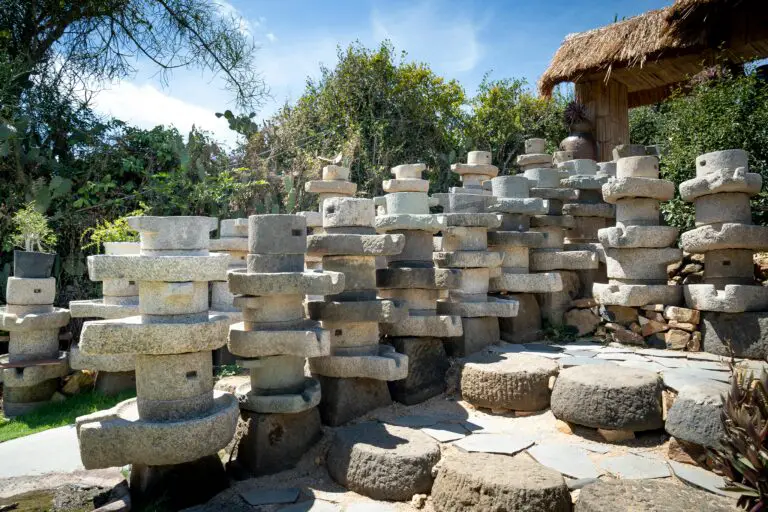
Conserving Water One Stone at a Time
Water scarcity is a growing concern, and every drop saved is a step towards a sustainable future. Sedum, the drought-tolerant maestro of the plant kingdom, requires minimal hydration compared to its thirstier companions. Rock gardens adorned with these succulents become oases of conservation. Why? Because rocks act as a natural mulch, minimizing evaporation, while sedums sip on the sparse moisture, coexisting in harmony with the environment.
Beacons for Pollinators
Beyond their thirst-quenching efficiency, sedums are veritable magnets for bees, butterflies, and other pollinators. Each sedum flower is a bustling metropolis for these tireless workers of nature. By introducing sedum into rock landscapes, we are effectively rolling out the red carpet for pollinators, providing them with a banquet of nectar and pollen which, in return, supports biodiversity and aids in the pollination of surrounding flora.
Nature’s Own Habitat Creation
In the crevices between rocks and sedum leaves, a miniature ecosystem thrives. Small animals, beneficial insects, and microorganisms find sanctuary among the foliage. This microhabitat becomes a vital refuge, especially in urban areas where green spaces are shrinking. Thus, rock gardens with sedum are not just decorative; they are dynamic bio-networks contributing to the health and diversity of local ecosystems.
So, when we weave sedum into the fabric of our rock gardens, we’re not only cultivating beauty but also nurturing the planet. These gardens act as natural air conditioners, pockets of tranquility, and bastions of life in a world of concrete. With every sedum that takes root in a bed of pebbles, we edge closer to an equilibrium with nature – a testament to the small yet significant role our gardens play in the environmental tapestry.
Frequently Asked Questions
For all you rock garden enthusiasts and sedum admirers, it’s time to address the burning question: will sedum grow in rocks? Let’s dig into the gritty details and unearth some rock-solid answers to the most common inquiries about these resilient beauties.
Can Sedum Prosper in Purely Rocky Terrains?
Picture this: a sun-drenched hillside speckled with a mosaic of pebbles and rocks. Right there, amidst this seemingly inhospitable terrain, you find sedum not just growing, but thriving. Sedum’s secret lies in its succulent nature, allowing it to store water and flourish in conditions that would wither other plants. Therefore, yes, sedum can indeed prosper in rocky terrains, as they offer excellent drainage – a high-five from Mother Nature for these adaptable plants!
How Much Soil Do Sedums Require to Grow Among Rocks?
The astonishing thing about sedums is their meager demand for soil. In fact, these hardy plants can squeeze life from minimal soil tucked away in the crevices of your rockery. A sliver of soil is enough for their roots to take hold, making them a top pick for that nook in your garden where nothing else seems to grow.
Do Sedums Need Special Care When Grown in Stony Settings?
Imagine a plant that asks so little yet gives so much. Sedums are just that. In rocky settings, they’re like the self-sufficient hermits of the plant world. No need for pampering with organic compost or fretting over fertilizers. Just give them plenty of sunshine, a little water, and they’re all set to put on a spectacular show.
What Types of Sedum Are Best Suited for Growing in Rocks?
If you’re envisioning a carpet of color between your stepping-stones, look no further than low-growing sedums like ‘Dragon’s Blood’ or the ever-popular ‘Angelina’. These ground-hugging varieties will fill in gaps with their vibrant hues and fascinating textures. For vertical drama, ‘Autumn Joy’ and its upright cousins reach skyward, providing a bold contrast to the flat stones they rise from.
Don’t take just our word for it; let’s visually explore how sedum can transform your rocky garden into a living tapestry. Check out this video:
With the right choice of species and minimal upkeep, sedums don’t just grow in rocks—they sparkle, transforming your garden into a resilient, vibrant haven for these succulent jewels.



